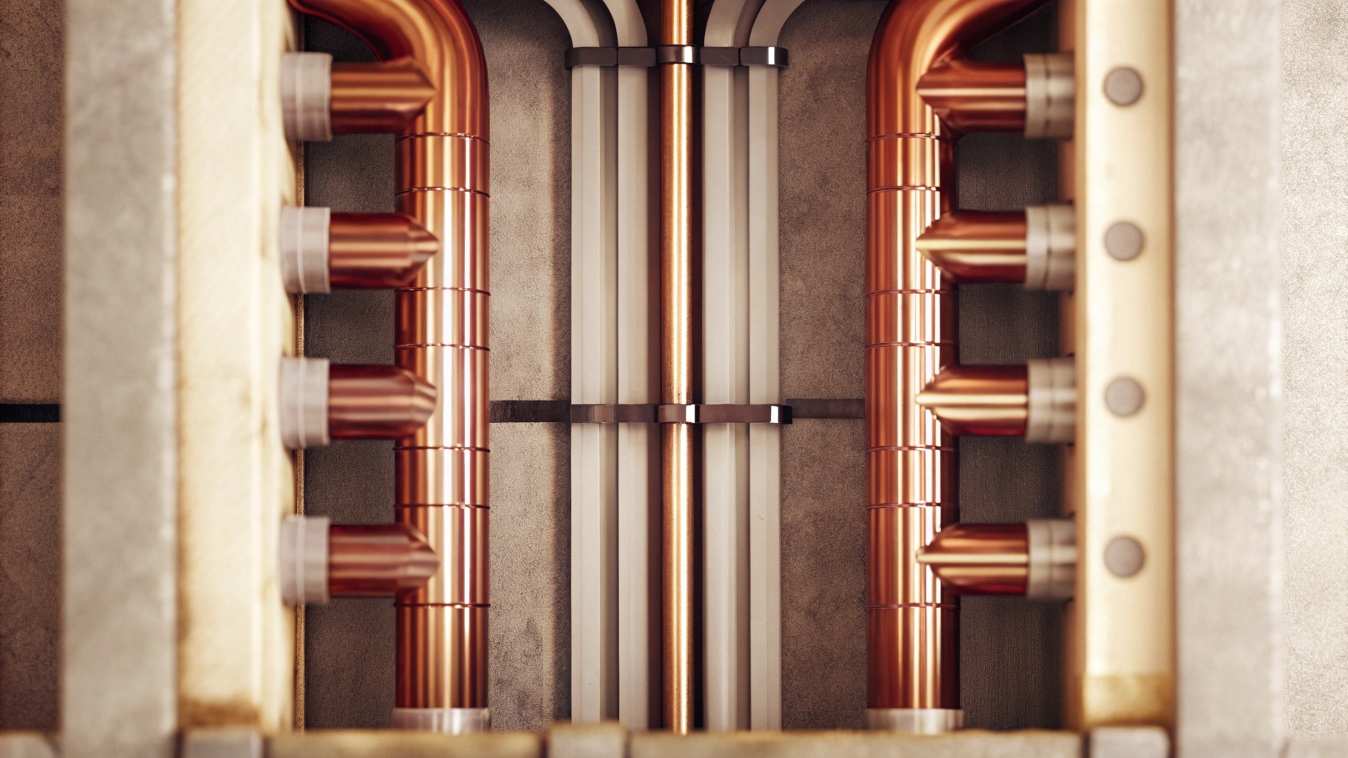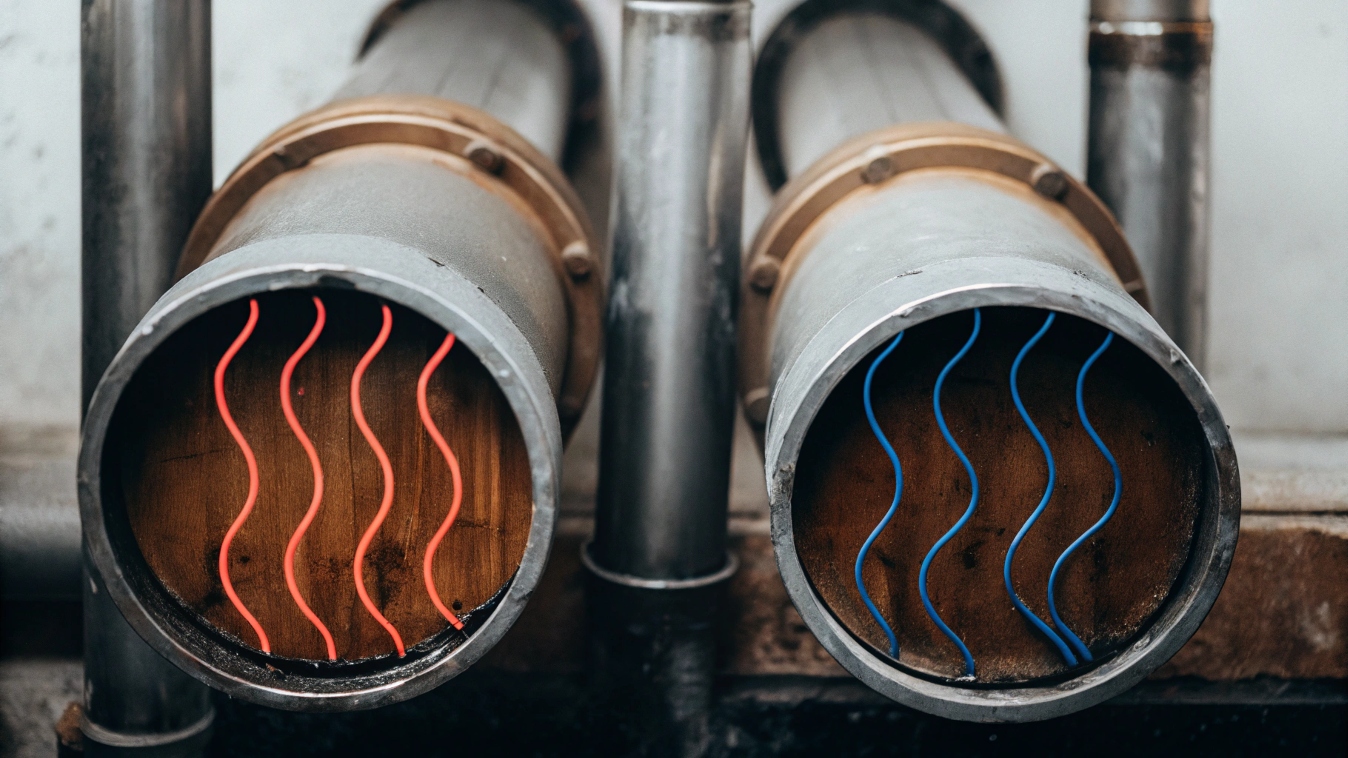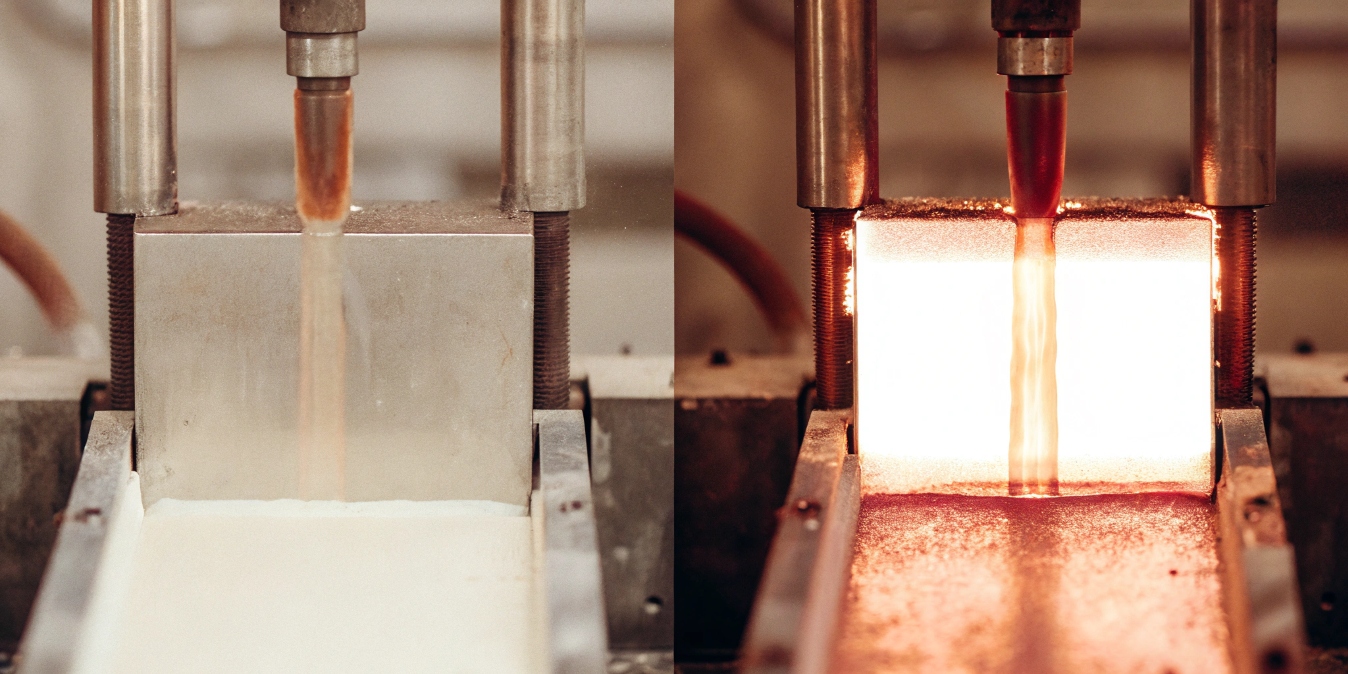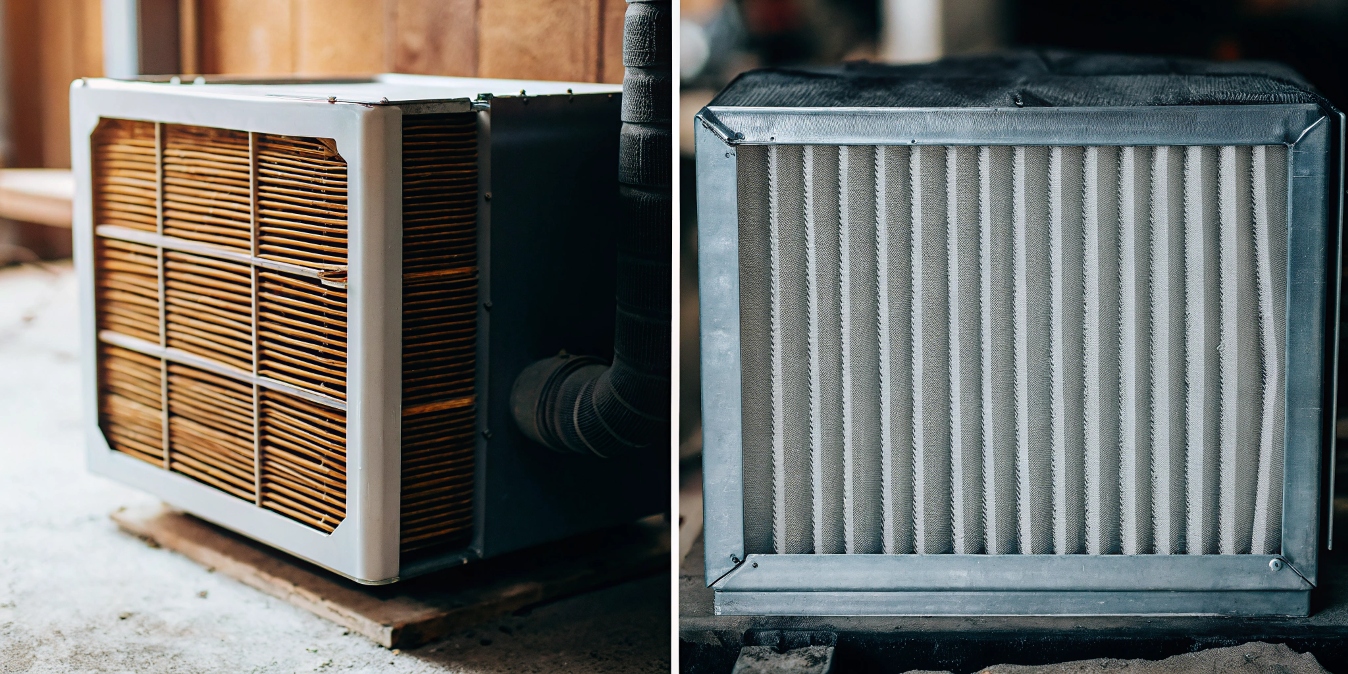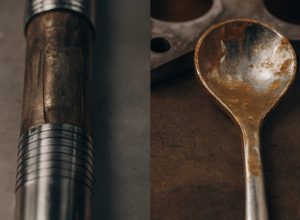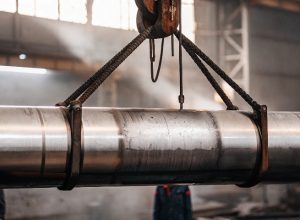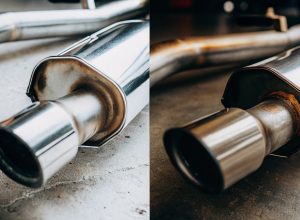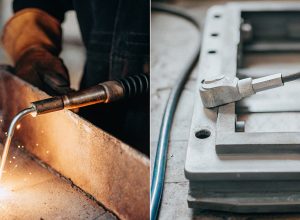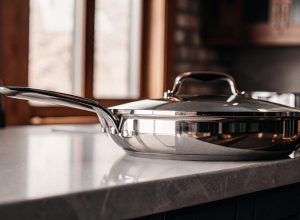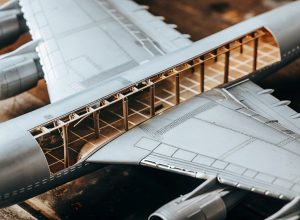¿Le preocupa el calor desperdiciado y las elevadas facturas de energía de su planta? Esta pérdida de energía perjudica a su cuenta de resultados. Un intercambiador de calor de aire captura y reutiliza ese calor de forma eficaz.
Un intercambiador de calor de aire transfiere calor de una corriente de aire a otra sin mezclarlas. El aire de escape caliente pasa sobre placas o tubos metálicos, calentándolos. El aire más frío que entra pasa por el otro lado, recuperando el calor y ahorrando energía.
Este concepto básico es sencillo, pero el verdadero valor está en los detalles. El diseño y los materiales lo cambian todo, sobre todo en entornos industriales difíciles. He visto a clientes ganar una enorme eficiencia sólo por elegir el tipo adecuado. Entonces, ¿cómo gestionan este proceso los diseños específicos, como los modelos aire-aire?
¿Cómo funciona el intercambiador de calor aire-aire?
¿Necesita recuperar el calor entre dos corrientes de aire sin que lleguen a tocarse? La contaminación cruzada es un gran riesgo en las plantas químicas. Un intercambiador aire-aire utiliza canales separados para una transferencia de calor segura.
En un intercambiador de calor aire-aire, dos corrientes de aire separadas fluyen a través de canales adyacentes, divididos por una pared metálica conductora. El calor pasa de la corriente caliente a la fría a través de la pared. El aire nunca se mezcla, lo que garantiza la pureza del proceso.
Recuerdo haber trabajado con un cliente de la industria petroquímica. Evacuaban gases de escape calientes y corrosivos. Al mismo tiempo, gastaban mucho en calentar aire fresco de entrada para otro proceso. El riesgo de mezclar estas dos corrientes era inaceptable.
Por qué es fundamental elegir el material
Aquí es donde entra en juego el diseño a medida. Recomendamos un intercambiador de calor de placas aire-aire. El diseño mantiene las dos corrientes de aire completamente separadas. La clave estaba en el material. El acero estándar se corroería en semanas. Especificamos titanio de grado 2 para las placas por su increíble resistencia a la corrosión. Esta elección evita fugas y garantiza una larga vida útil, incluso con productos químicos agresivos.
Aplicaciones comunes y ventajas
Las ventajas van más allá de la mera prevención de la contaminación. El uso de titanio también mejora la eficiencia térmica. He aquí un rápido desglose de dónde se utilizan y por qué.
| Industria | Aplicación | Beneficio clave |
|---|---|---|
| Petroquímica | Recuperar el calor de los gases de escape | Resistencia a la corrosión |
| HVAC | Precalentamiento del aire fresco en invierno | Ahorro de energía |
| Procesado de alimentos | Procesos de secado | Pureza e higiene |
Al elegir el diseño y el material adecuados, mi cliente no se limitó a resolver un problema de contaminación. Convirtió el calor residual en un activo valioso, reduciendo significativamente sus costes energéticos.
¿Cómo funciona un intercambiador de calor para dummies?
¿Le suena "intercambiador de calor" a término sacado de un libro de texto de ingeniería? La jerga puede hacer que una idea sencilla parezca confusa. Reduzcámoslo a su forma más simple.
Imagina dos tuberías que discurren una al lado de la otra. Una de ellas transporta líquido caliente y la otra líquido frío. El calor del tubo caliente atraviesa la pared metálica y calienta el líquido frío sin que ambos se mezclen. Eso es un intercambiador de calor.
La analogía de las dos tuberías es la idea central. Ahora, hagámosla más práctica. En lugar de dos tubos, imaginemos cientos de placas huecas y delgadas apiladas. El fluido caliente fluye por uno de cada dos canales, y el fluido frío fluye por los canales intermedios.
¿Busca tubos de titanio de alta calidad?
Explore nuestra gama de soluciones de tuberías de titanio adecuadas para aplicaciones aeroespaciales, médicas e industriales. Nuestros productos están diseñados para cumplir rigurosas normas y ofrecer un rendimiento fiable en diversos entornos.
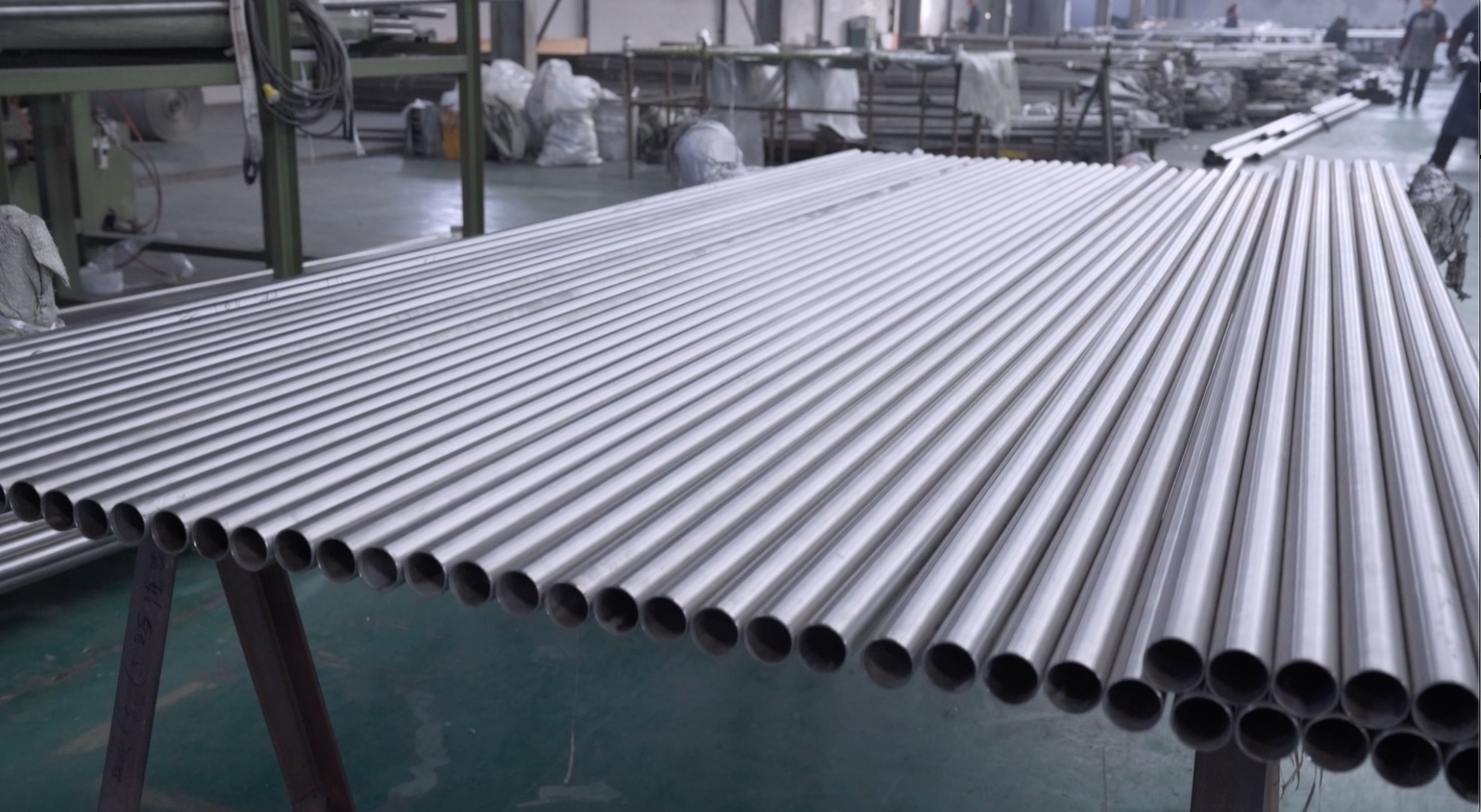
Placas frente a tubos
¿Por qué utilizar placas en lugar de simples tubos? Es una cuestión de superficie. Cuanta más superficie haya entre los fluidos caliente y frío, más rápida y eficaz será la transferencia de calor. Piénselo: una pila de placas finas tiene mucha más superficie de contacto que dos tubos redondos. Por eso son tan populares los intercambiadores de calor de placas. A menudo aconsejo a clientes como Ahmed, el distribuidor en Turquía, que los intercambiadores de calor de placas de titanio son un gran producto para almacenar. Son compactos y muy eficaces para su tamaño.
¿Busca chapas y placas de titanio duraderas?
Explore nuestra gama de chapas y placas de titanio de alta calidad diseñadas para aplicaciones aeroespaciales, químicas y marinas. Nuestros productos cumplen rigurosas normas y garantizan la fiabilidad en entornos exigentes.
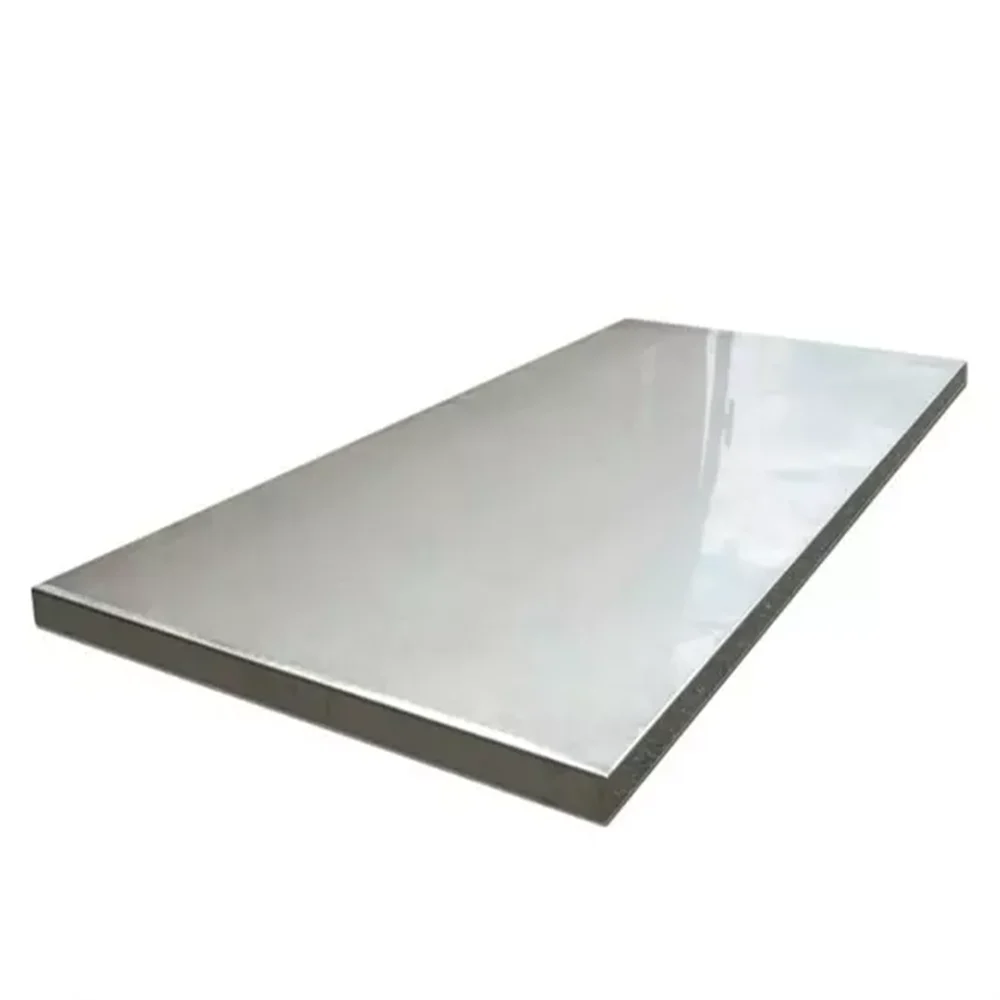
El papel de la pared metálica
La pared que separa los fluidos cumple dos funciones. En primer lugar, impide que se mezclen. En segundo lugar, conduce el calor. El material que utilizamos para esa pared es muy importante. El cobre es un gran conductor, pero se corroe con facilidad. El acero inoxidable es mejor, pero en muchas aplicaciones químicas, no es suficiente. Por eso solemos utilizar titanio. Tiene buenas propiedades de transferencia de calor y es excepcionalmente resistente a la corrosión por agua salada o ácidos. Esto hace que el equipo dure más y funcione con mayor fiabilidad.
¿Cuál es el principio básico de funcionamiento de un intercambiador de calor?
Entiendes la idea básica, pero ¿cuál es la ciencia real que hace que funcione? No conocer el principio básico puede llevar a malas decisiones. Se trata de termodinámica y diseño eficiente.
El principio básico de funcionamiento es la transferencia de energía térmica por conducción. El calor se desplaza de forma natural de una sustancia más caliente a otra más fría. Un intercambiador de calor utiliza un material conductor, normalmente metal, para facilitar esta transferencia entre dos fluidos manteniéndolos separados.
Este principio procede de la Segunda Ley de la Termodinámica. El calor siempre fluye de caliente a frío para alcanzar un equilibrio. Un intercambiador de calor no es más que un dispositivo diseñado para que este proceso natural se produzca de forma muy eficiente. Cuando diseñamos una unidad, nos centramos en maximizar esta transferencia.
Maximizar la transferencia de calor
Varios factores influyen en la eficiencia. Tenemos en cuenta las propiedades del fluido, la diferencia de temperatura y el caudal. Pero dos de las principales opciones de diseño son la superficie y el patrón de flujo. Como ya he dicho, más superficie significa más transferencia de calor. La otra clave es cómo fluyen los fluidos entre sí.
Patrones de flujo: Contraflujo frente a flujo paralelo
La disposición del caudal influye enormemente en la eficiencia.
| Tipo de flujo | Descripción | Eficacia |
|---|---|---|
| Flujo paralelo | Los fluidos calientes y fríos entran por el mismo extremo y fluyen en la misma dirección. | Moderado |
| Contraflujo | Los fluidos entran por extremos opuestos y fluyen en direcciones opuestas. | Alta |
Casi siempre se prefiere la contracorriente. A medida que el fluido frío se calienta, se encuentra con tramos cada vez más calientes del recorrido del fluido caliente. Así se mantiene una diferencia de temperatura más constante a lo largo de todo el intercambiador, lo que permite una transferencia de calor mucho más eficaz. Cuando consulto a mis socios fabricantes de Xi'an, siempre modelamos la dinámica del flujo para asegurarnos de que se utiliza un diseño de contraflujo siempre que sea posible.
¿Cuál es la diferencia entre un intercambiador de aire y un intercambiador de calor?
¿Le suenan a lo mismo los términos "intercambiador de aire" e "intercambiador de calor"? Esta confusión tan común puede dar lugar a errores muy costosos. Permítame aclarar la diferencia clave.
La principal diferencia es su finalidad. La función principal de un intercambiador de aire es ventilar, es decir, sustituir el aire viciado del interior por aire fresco del exterior. La función principal de un intercambiador de calor es transferir calor entre dos fluidos cualesquiera (gases o líquidos), no necesariamente para la ventilación.
Aunque sus nombres son similares, sus funciones son diferentes. Piénsalo así: un intercambiador de aire se centra en el aire calidadmientras que un intercambiador de calor se centra en la energía recuperación.
La función principal de cada dispositivo
Un intercambiador de aire tiene que ver con la ventilación. Su objetivo es introducir aire fresco del exterior y expulsar el aire viciado del interior. Se ven en viviendas y edificios de oficinas. En cambio, los intercambiadores de calor con los que suelo trabajar son para la industria pesada. Su objetivo es mover energía térmica. Por ejemplo, utilizar gas residual caliente para precalentar un producto químico antes de que entre en un reactor. Los fluidos pueden ser aire, agua, aceite o ácidos.
Dónde se solapan
La confusión se debe a que algunos aparatos realizan ambas funciones. Un ventilador de recuperación de calor (HRV) es un tipo de intercambiador de aire que también incluye un núcleo intercambiador de calor. Ventila un edificio pero utiliza el calor del aire viciado saliente para calentar el aire fresco entrante. Es un ejemplo perfecto de ambos principios. Sin embargo, los intercambiadores de calor industriales que construimos a partir de aleaciones de titanio para plantas químicas están altamente especializados para la transferencia térmica en entornos corrosivos. No están diseñados para una simple construcción. ventilación1. La atención se centra en procesos como la condensación o el calentamiento, que son mucho más exigentes.
Conclusión
En resumen, los intercambiadores de calor utilizan la conducción para transferir calor entre fluidos separados. El diseño y el material adecuados, como el titanio, son cruciales para la eficiencia y la durabilidad en aplicaciones industriales exigentes.
-
Explore el papel de la ventilación en el mantenimiento de la calidad del aire y la eficiencia energética. ↩

[^1] que muestra los flujos de aire caliente y frío](https://titonestmetal.com/wp-content/uploads/2025/08/an-air-heat-exchanger-transfers-heat-from-one-ai.jpg)
